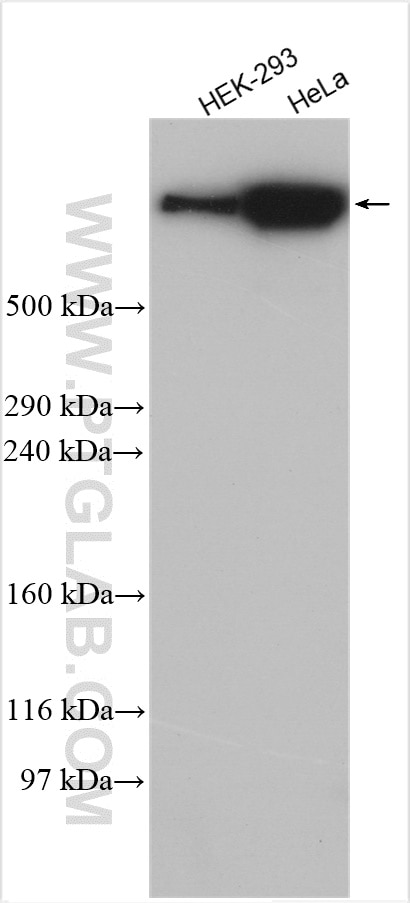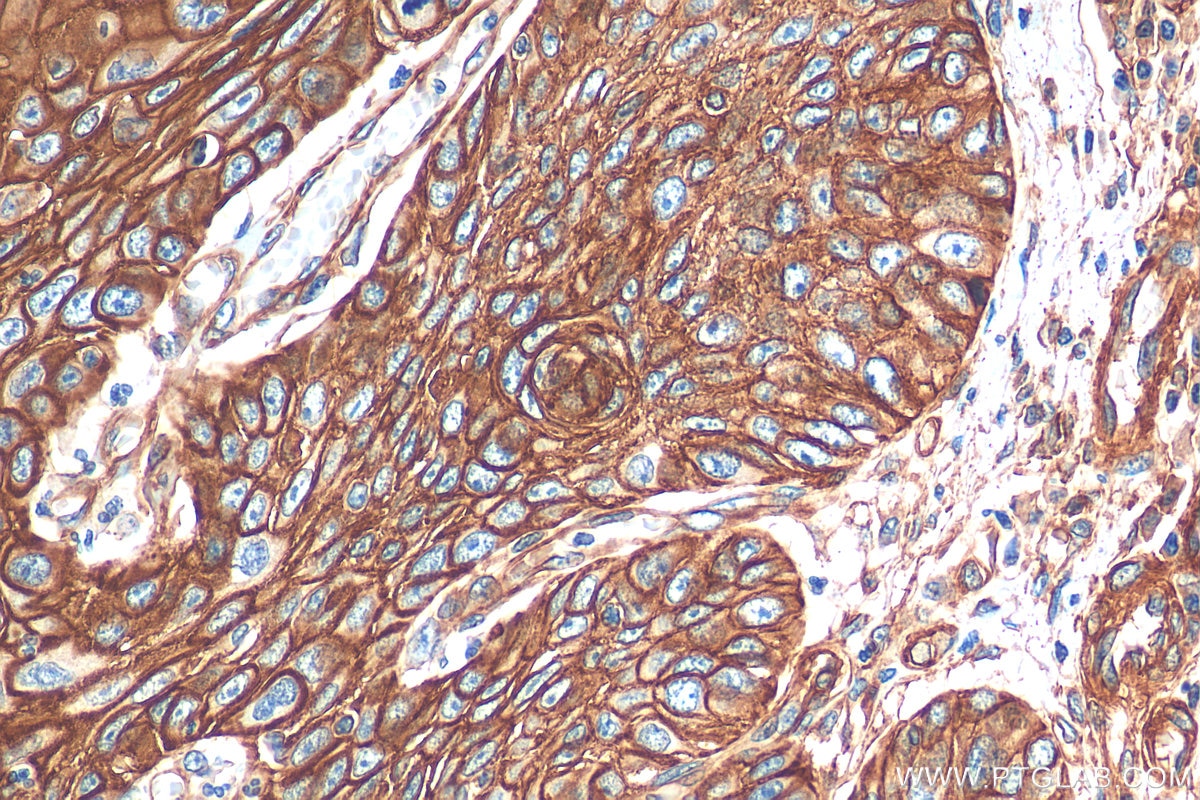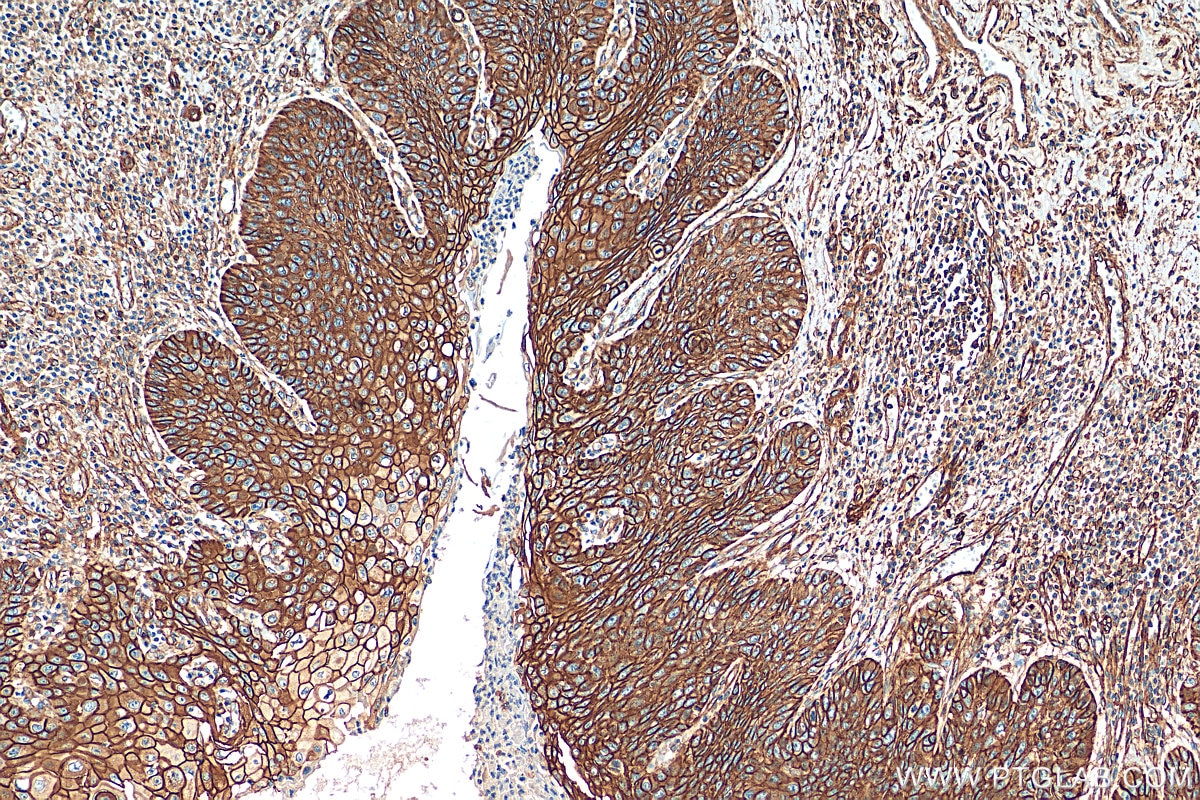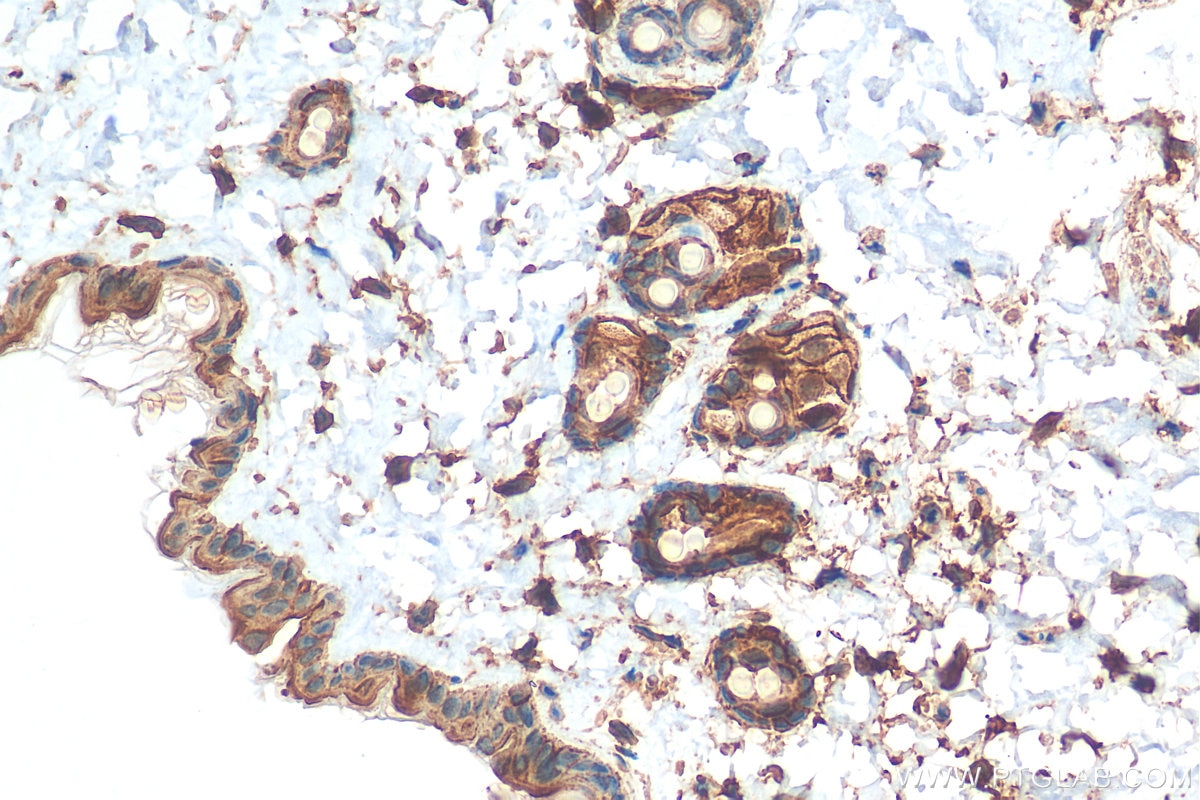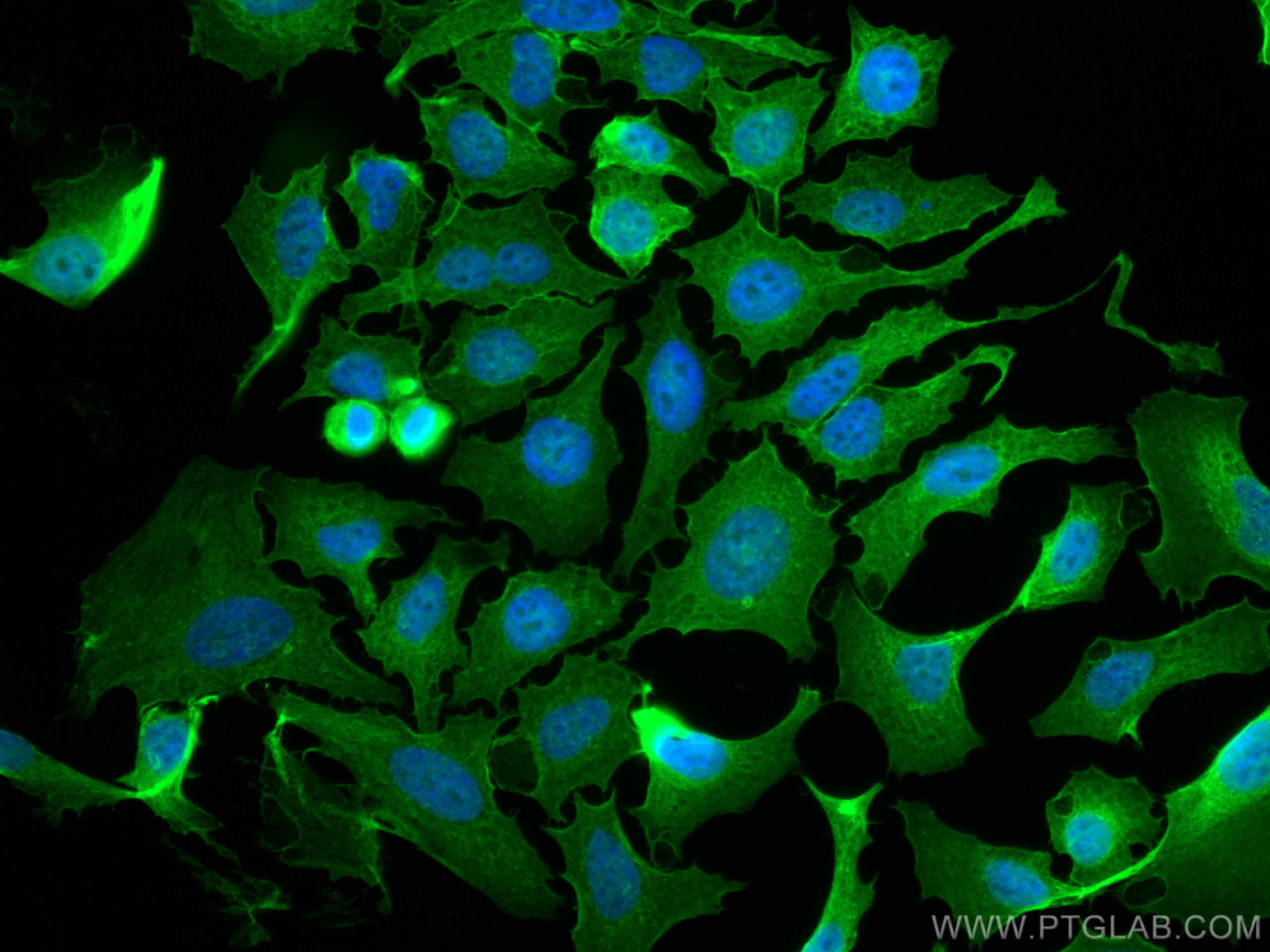AHNAK Polyklonaler Antikörper
AHNAK Polyklonal Antikörper für IF, IHC, WB, ELISA
Wirt / Isotyp
Kaninchen / IgG
Getestete Reaktivität
human, Maus
Anwendung
WB, IHC, IF, FC, ELISA
Konjugation
Unkonjugiert
Kat-Nr. : 16637-1-AP
Synonyme
Galerie der Validierungsdaten
Geprüfte Anwendungen
| Erfolgreiche Detektion in WB | HEK-293-Zellen, HeLa-Zellen |
| Erfolgreiche Detektion in IHC | humanes Ösophaguskarzinomgewebe, Maushautgewebe Hinweis: Antigendemaskierung mit TE-Puffer pH 9,0 empfohlen. (*) Wahlweise kann die Antigendemaskierung auch mit Citratpuffer pH 6,0 erfolgen. |
| Erfolgreiche Detektion in IF | HeLa-Zellen |
Empfohlene Verdünnung
| Anwendung | Verdünnung |
|---|---|
| Western Blot (WB) | WB : 1:1000-1:4000 |
| Immunhistochemie (IHC) | IHC : 1:50-1:500 |
| Immunfluoreszenz (IF) | IF : 1:50-1:500 |
| It is recommended that this reagent should be titrated in each testing system to obtain optimal results. | |
| Sample-dependent, check data in validation data gallery | |
Veröffentlichte Anwendungen
| IF | See 2 publications below |
| FC | See 1 publications below |
Produktinformation
16637-1-AP bindet in WB, IHC, IF, FC, ELISA AHNAK und zeigt Reaktivität mit human, Maus
| Getestete Reaktivität | human, Maus |
| In Publikationen genannte Reaktivität | human |
| Wirt / Isotyp | Kaninchen / IgG |
| Klonalität | Polyklonal |
| Typ | Antikörper |
| Immunogen | AHNAK fusion protein Ag9986 |
| Vollständiger Name | AHNAK nucleoprotein |
| Berechnetes Molekulargewicht | 629 kDa |
| GenBank-Zugangsnummer | BC000926 |
| Gene symbol | AHNAK |
| Gene ID (NCBI) | 79026 |
| Konjugation | Unkonjugiert |
| Form | Liquid |
| Reinigungsmethode | Antigen-Affinitätsreinigung |
| Lagerungspuffer | PBS mit 0.02% Natriumazid und 50% Glycerin pH 7.3. |
| Lagerungsbedingungen | Bei -20°C lagern. Nach dem Versand ein Jahr lang stabil Aliquotieren ist bei -20oC Lagerung nicht notwendig. 20ul Größen enthalten 0,1% BSA. |
Hintergrundinformationen
AHNAK, also known as desmoyokin, is described as a giant scaffold protein based on its large size (629 kDa) and ability to interact with different proteins to form multi-protein complexes. The bulk of the protein is assembled in 128-residue repetitive elements known as the central repeated unit (CRU). Its proposed functions are quite diverse, ranging from a role in the formation of the blood brain barrier, in cell architecture and migration, to the regulation of cardiac channels and muscle membrane repair. AHNAK is differentially expressed in some cancer cell lines. The expression of AHNAK is subsequently localized to the plasma membrane of keratinocytes in human epidermis. AHNAK has been reported in many intracellular locations including the nucleus, cytoplasm and plasma membrane.
Protokolle
| Produktspezifische Protokolle | |
|---|---|
| WB protocol for AHNAK antibody 16637-1-AP | Protokoll herunterladen |
| IHC protocol for AHNAK antibody 16637-1-AP | Protokoll herunterladen |
| IF protocol for AHNAK antibody 16637-1-AP | Protokoll herunterladen |
| Standard-Protokolle | |
|---|---|
| Klicken Sie hier, um unsere Standardprotokolle anzuzeigen |
Publikationen
| Species | Application | Title |
|---|---|---|
Nat Commun Innate-like self-reactive B cells infiltrate human renal allografts during transplant rejection. | ||
EMBO Rep Microautophagy regulated by STK38 and GABARAPs is essential to repair lysosomes and prevent aging | ||
Clin Exp Immunol The AHNAK induces increased IL-6 production in CD4+T cells and serves as a potential diagnostic biomarker for recurrent pregnancy loss. |
